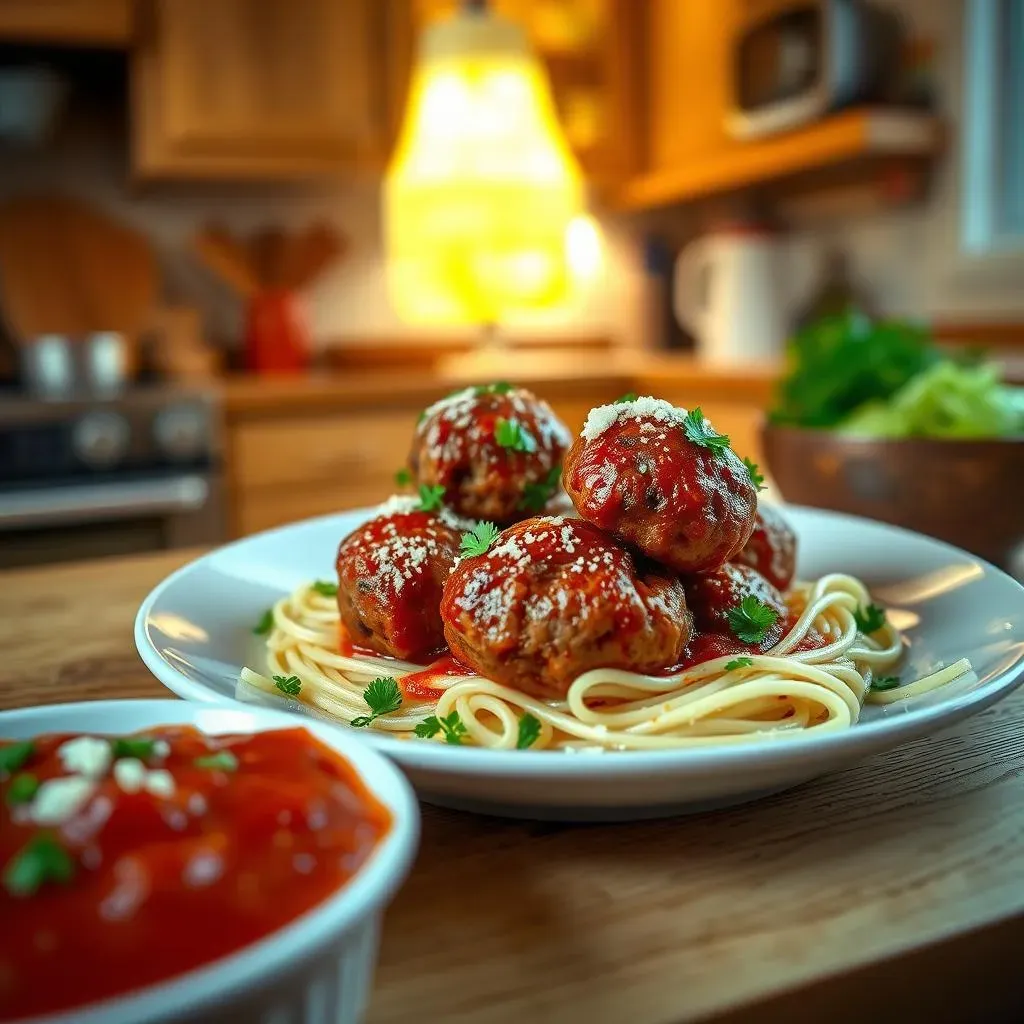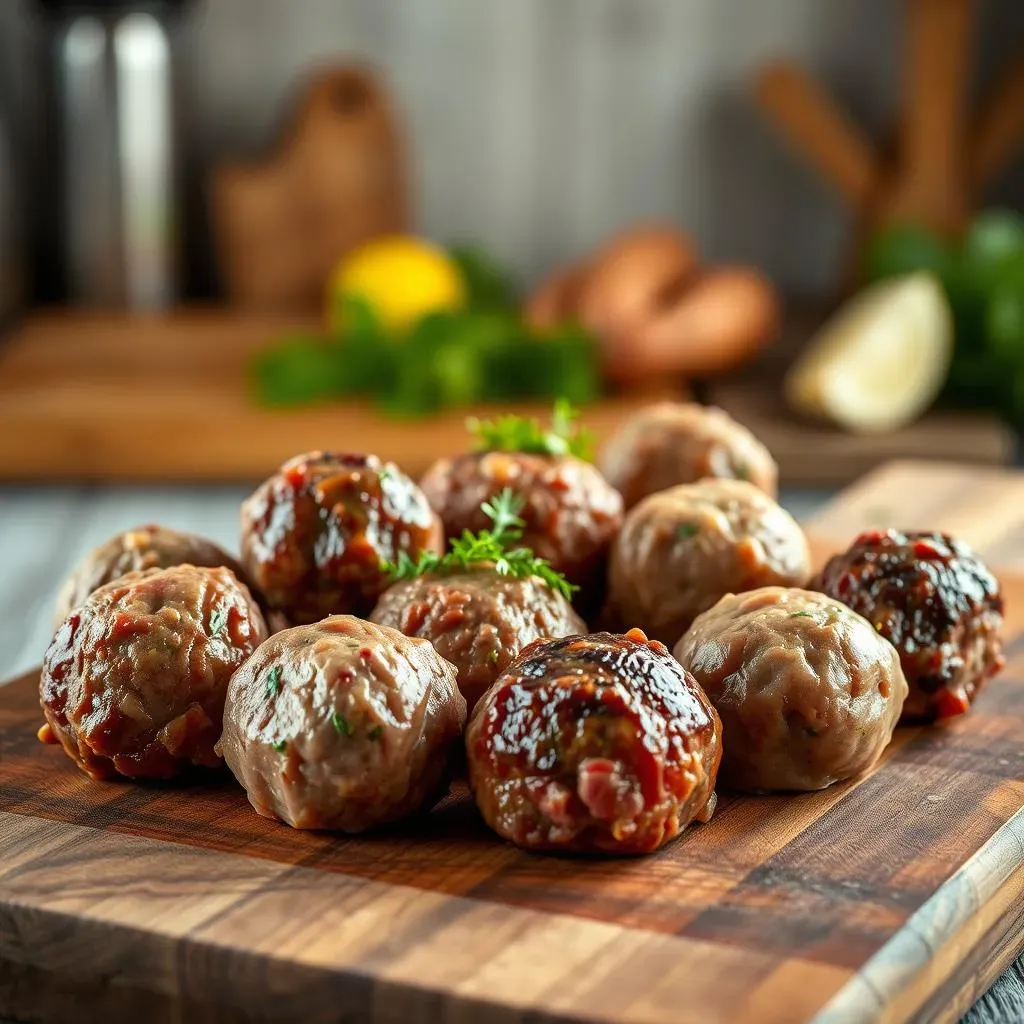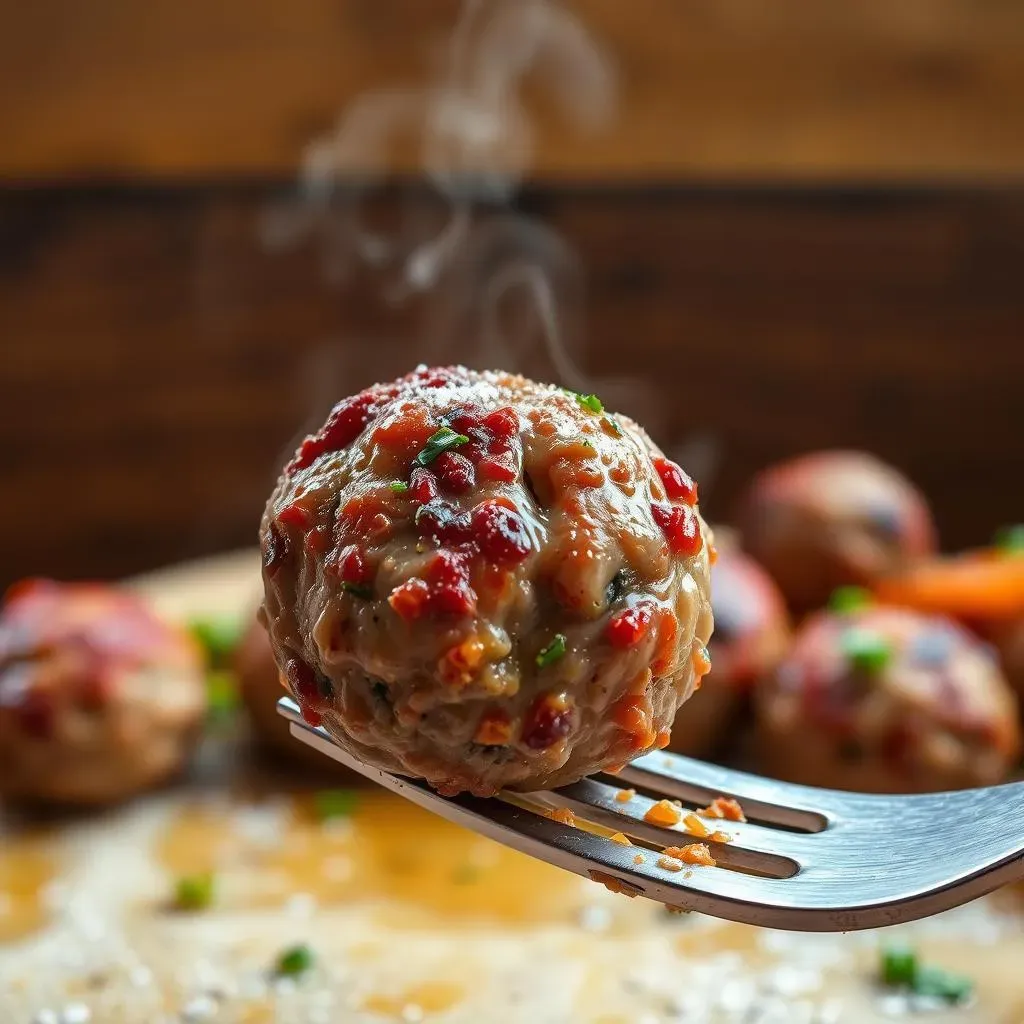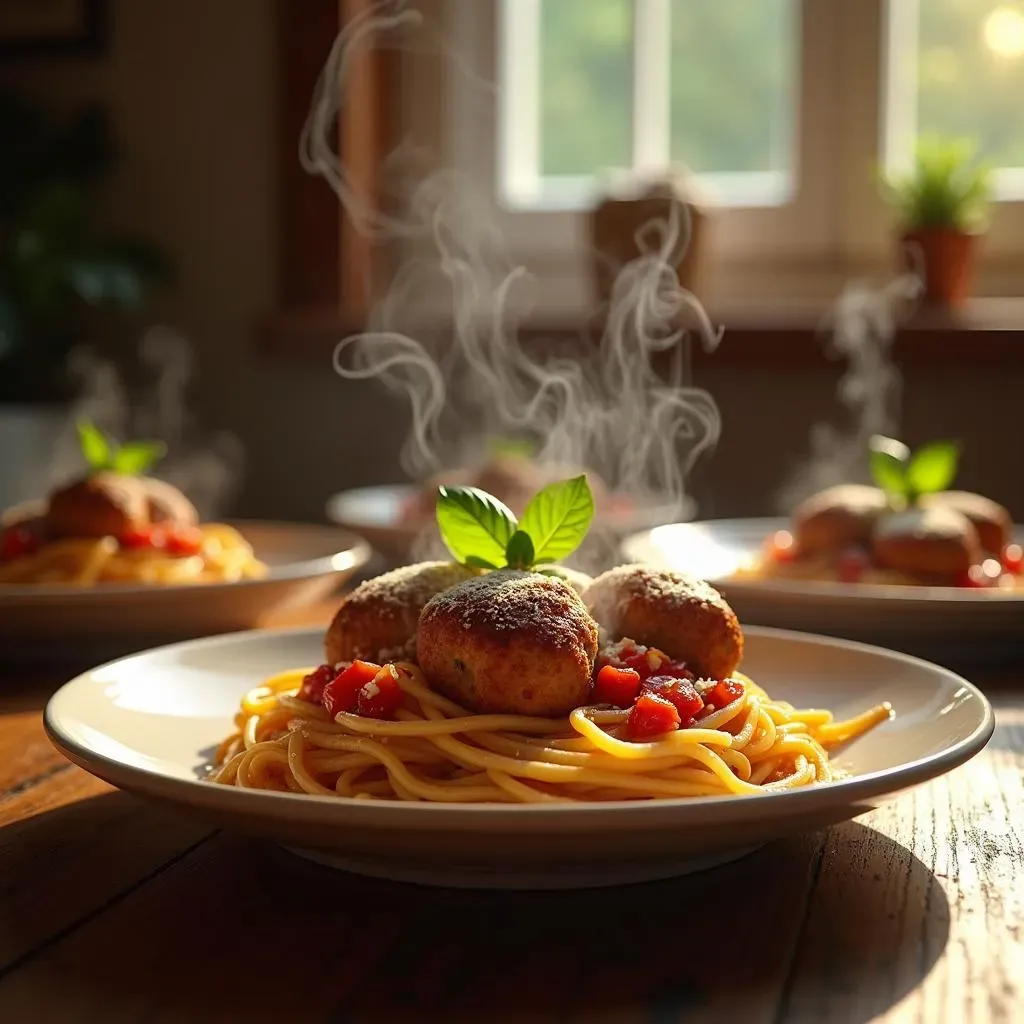Table of Contents
Tired of dry, crumbly meatballs? Ready to ditch the breadcrumbs and unlock a world of juicy, flavorful possibilities? Then you've come to the right place! This comprehensive guide dives into the art of creating the perfect beef meatball recipe without breadcrumbs. We'll explore the best ingredients and techniques for achieving that melt-in-your-mouth texture, taking you beyond basic beef to exciting flavor combinations. Get ready to master the art of cooking your meatballs – whether you prefer oven-baked, pan-fried, or even grilled perfection – and discover creative serving suggestions to elevate your culinary game. Whether you're a seasoned chef or a kitchen novice, this guide will equip you with the knowledge and confidence to make unbelievably delicious beef meatballs, completely free from breadcrumbs. Let's get started on your journey to the ultimate beef meatball recipe without breadcrumbs!
Mastering the Meatball Mix: Ingredients and Techniques

Mastering the Meatball Mix: Ingredients and Techniques
The Ground Beef: Your Foundation
Let's start with the star of the show: the ground beef! I always recommend using a blend of 80/20 ground beef for the perfect balance of flavor and juiciness. Too lean, and your meatballs will be dry. Too fatty, and they'll be greasy. This is a key part of making delicious ground beef meatballs. You want that perfect texture, right?
Don't be afraid to experiment! You can try different cuts of ground beef, like chuck or sirloin, to see how they affect the final product. You could even use a beef and pork mix for a richer flavor. The key is to find what you like best!
Ground Beef Type | Fat Content | Meatball Texture |
|---|---|---|
80/20 | 20% Fat | Juicy and tender |
90/10 | 10% Fat | Leaner, but can be dry |
70/30 | 30% Fat | Rich and flavorful, but potentially greasy |
Seasoning Your Success: Herbs, Spices, and More
Now, for the fun part – the seasoning! This is where you can really get creative and personalize your meatballs. Classic Italian seasonings like garlic powder, onion powder, oregano, and basil are always a great starting point. But don't be afraid to branch out! A pinch of red pepper flakes adds a nice kick, while a little Parmesan cheese adds a salty, umami depth.
I always encourage experimentation. Try adding some fresh herbs like parsley or cilantro for a brighter flavor. You could even incorporate some finely grated carrots or zucchini for extra moisture and nutrients. Remember, this is your recipe, so make it your own! And don't forget to season generously – your taste buds will thank you. Check out this recipe for basic beef meatballs for inspiration.
- Garlic Powder
- Onion Powder
- Dried Oregano
- Dried Basil
- Red Pepper Flakes (optional)
- Parmesan Cheese (grated)
Binding it All Together: The Secret to Juicy Meatballs
While we're skipping breadcrumbs, we still need something to bind our meatball mixture together. Eggs are a classic choice, adding moisture and helping the meatballs hold their shape. However, if you're looking for a breadcrumb alternative for a dairy-free option, consider using finely grated vegetables like zucchini or carrots. They add moisture and bind the meat beautifully.
Another fantastic binder is finely chopped mushrooms. Sautéed before adding them to the mix, mushrooms add a rich umami flavor and hold the meatballs perfectly. Experiment with different binders to find your preferred method. The goal is to achieve a mixture that's moist enough to hold its shape without being overly wet or mushy. A little experimentation goes a long way!
"The best meatball is the one you enjoy the most!" - Anonymous Meatball Enthusiast
Beyond Beef: Exploring Flavor Combinations

Beyond Beef: Exploring Flavor Combinations
Adding Pork: A Classic Combination
Let's talk about pork! Adding ground pork to your beef creates a richer, more flavorful meatball. The pork fat adds incredible juiciness, while the slightly different flavor profile complements the beef beautifully. It's a classic combination for a reason! Try a 50/50 blend of ground beef and ground pork for a truly delicious result. This is a great option if you want to make pork and beef meatballs.
The ratio of beef to pork is entirely up to your preference. A higher percentage of pork will result in a richer, fattier meatball, while a higher percentage of beef will maintain a leaner profile. Experiment to find your perfect balance! You might even want to check out this beef, pork, and veal recipe for an even more complex flavor.
- Ground Beef (80/20)
- Ground Pork (80/20)
- Experiment with ratios (e.g., 70/30, 50/50)
Beyond the Usual Suspects: Lamb, Chicken, and More
But why stop at beef and pork? The world of meatball possibilities is vast! Ground lamb adds a distinctly savory, almost gamey flavor that's perfect for those who appreciate bolder tastes. Ground chicken provides a leaner, lighter option, ideal for those watching their calorie intake. For a truly unique experience, try mixing ground turkey or even a blend of different meats for a truly complex flavor profile.
Think outside the box! You can incorporate other ingredients, too. Finely diced vegetables like carrots or zucchini can add moisture and subtle sweetness. Some people even add cooked lentils or quinoa for extra heartiness and a unique texture. Remember, the possibilities are endless! Consider using these ideas to create chicken or beef meatballs for a nice comparison.
Meat Type | Flavor Profile | Texture |
|---|---|---|
Ground Lamb | Savory, Gamey | Rich, Dense |
Ground Chicken | Mild, Lean | Light, Fluffy |
Ground Turkey | Mild, slightly sweet | Lean, Moist |
Cooking Your Perfect Meatball: Oven, Pan, or Grill?

Cooking Your Perfect Meatball: Oven, Pan, or Grill?
Oven-Baked: For Even Cooking and Crispy Edges
Oven-baking is a fantastic method for achieving consistently cooked meatballs, especially when dealing with larger batches. The even heat distribution ensures that your meatballs cook thoroughly without burning the outside. Plus, you get a slightly crispy exterior that's simply irresistible. For perfectly baked meatballs, try placing them on a baking sheet lined with parchment paper and baking at 375°F (190°C) for about 20-25 minutes, or until cooked through. Don't forget to flip them halfway through for even browning! For a simple recipe, check out our oven-baked beef meatballs recipe.
A tip for extra crispy meatballs: broil them for the last few minutes of cooking! This will add a beautiful char and extra crunch to your meatballs. But keep a close eye on them to prevent burning. Remember to adjust cooking times depending on the size of your meatballs; smaller meatballs will cook faster than larger ones. Experiment with different baking times and temperatures to find your perfect method.
- Preheat oven to 375°F (190°C)
- Line a baking sheet with parchment paper
- Bake for 20-25 minutes, flipping halfway through
- Optional: Broil for the last 2-3 minutes for extra crispiness
Pan-Fried: For a Quick and Delicious Result
Pan-frying offers a quick and easy way to cook your meatballs, perfect for a weeknight meal. It creates a beautiful sear on the outside, adding a delicious depth of flavor. Simply heat a tablespoon or two of olive oil in a large skillet over medium-high heat. Add your meatballs and cook, turning occasionally, until golden brown and cooked through. This typically takes about 15-20 minutes, depending on the size of your meatballs and your stovetop. For those who prefer a speedy meal, this is a great option and an excellent way to make quick beef meatballs.
To ensure your meatballs cook evenly, avoid overcrowding the pan. Work in batches if necessary. You can also add a splash of broth or wine to the pan during cooking to deglaze it and create a delicious sauce. For extra flavor, try adding some fresh herbs or garlic to the pan during the last few minutes of cooking. Remember, pan-frying is a versatile method that can be adapted to your preferences.
Cooking Method | Cooking Time (approx.) | Pros | Cons |
|---|---|---|---|
Oven-Baked | 20-25 minutes | Even cooking, crispy exterior | Requires oven space, longer cooking time |
Pan-Fried | 15-20 minutes | Quick, easy, delicious sear | Requires attention, may need to cook in batches |
Grilled: For a Smoky, Charred Flavor
Grilling your meatballs adds a smoky, charred flavor that's simply irresistible. Preheat your grill to medium-high heat. Lightly oil the grates to prevent sticking. Place your meatballs on the grill and cook, turning occasionally, until cooked through and nicely charred. This usually takes about 10-15 minutes, depending on the size of your meatballs and the heat of your grill. This is a great way to add a unique touch to your fried beef meatballs or any other variation.
Grilling is a great way to add a smoky element to your meatballs. If you have a gas grill, you can adjust the heat as needed. If you have a charcoal grill, make sure the coals are hot enough before adding your meatballs. Keep an eye on them to prevent burning. For extra flavor, try marinating your meatballs before grilling. A simple marinade of olive oil, herbs, and garlic will do the trick. The result? Perfectly charred, flavorful meatballs with a hint of smoky goodness!
"The secret to a great meatball is to never rush the cooking process." - A wise meatball maker
Serving Suggestions: From Classic to Creative

Serving Suggestions: From Classic to Creative
Classic Comfort: Spaghetti and Meatballs
Let's start with the ultimate comfort food: spaghetti and meatballs! The rich, savory meatballs pair perfectly with a simple tomato sauce, tossed with perfectly cooked spaghetti. It's a classic for a reason! For extra flavor, try adding a sprinkle of Parmesan cheese and fresh basil. This is a guaranteed crowd-pleaser, especially if you make a big batch of beef meatball casserole for leftovers.
To elevate your spaghetti and meatballs, consider using high-quality ingredients. San Marzano tomatoes are known for their rich, sweet flavor, and fresh basil adds a bright, herbaceous note. A touch of red pepper flakes adds a subtle kick. Don't be afraid to experiment with different pasta shapes—penne, rotini, or even farfalle would work beautifully! Remember, even simple dishes can be elevated with a little attention to detail.
- Spaghetti
- Tomato Sauce
- Parmesan Cheese
- Fresh Basil
- Red Pepper Flakes (optional)
Beyond the Bowl: Creative Meatball Applications
But why limit yourself to spaghetti? Your delicious, breadcrumb-free meatballs are incredibly versatile! Try them in a hearty meatball sub, nestled between two crusty rolls with melted mozzarella and marinara sauce. Or, get creative and use them in a flavorful meatball soup, adding vegetables like carrots, celery, and onions for a nourishing and satisfying meal. For a lighter option, consider a meatball recipe using 1 lb ground beef and serve them over a bed of zucchini noodles.
Think outside the box! Use your meatballs as a topping for pizza, adding a burst of savory flavor. Incorporate them into salads for a protein boost. Even try adding them to your favorite grain bowls or wraps for a quick and delicious lunch. The possibilities are truly endless! The key is to experiment and find what you enjoy most. You could even try using your meatballs in a hearty stew or chili for a winter warmer. Don't be afraid to get creative and have fun with it!
Serving Suggestion | Description | Best Meatball Type |
|---|---|---|
Meatball Sub | Hearty sandwich with melted cheese and marinara | Any type |
Meatball Soup | Nourishing soup with vegetables | Leaner meats (chicken, turkey) |
Pizza Topping | Savory topping for pizza | Any type |